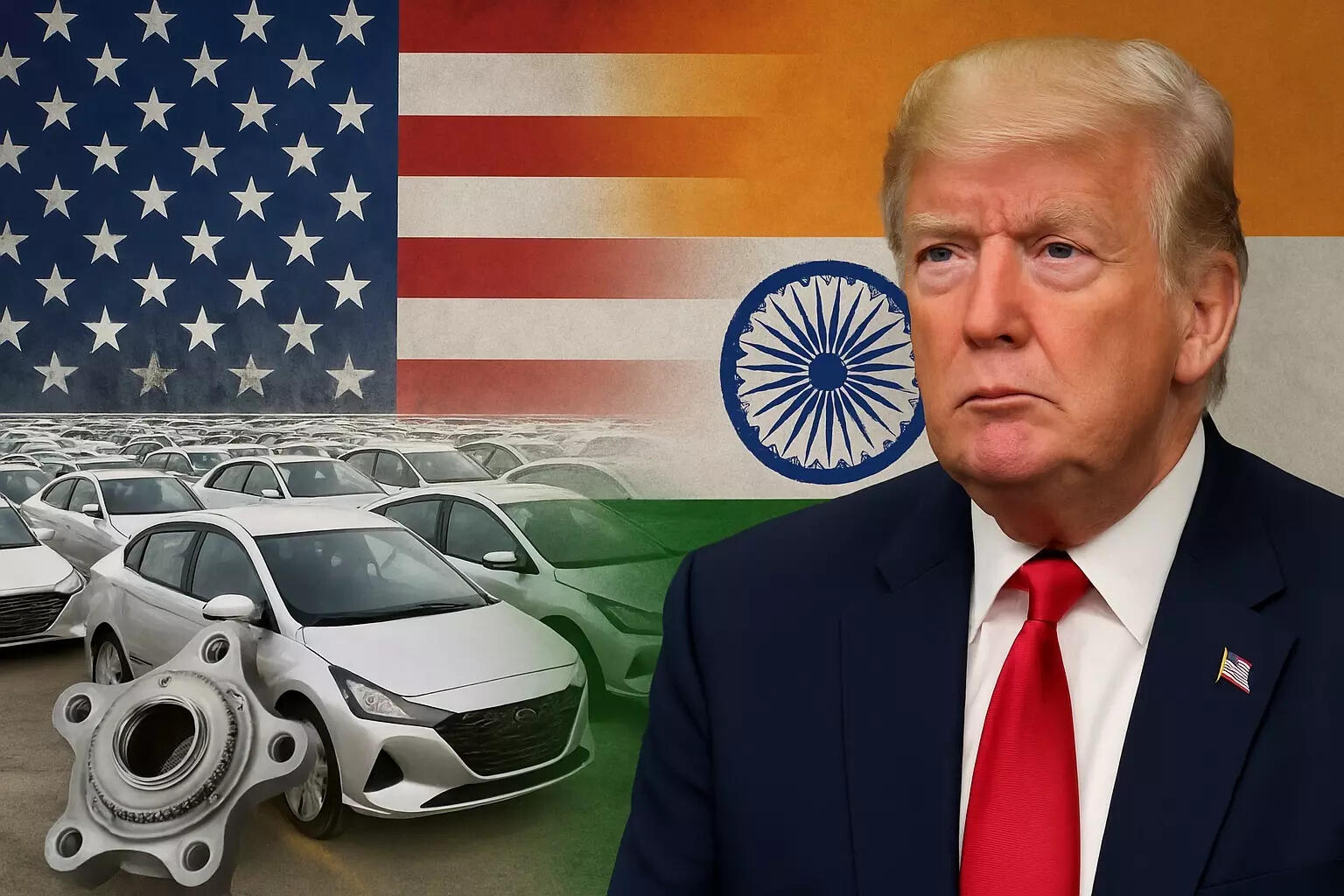- Exclusive
- Auto Components
- 4 min read
Indian auto component makers brace for impact as US slaps 25% tariff
The industry may be reluctant to speak about the US auto tariffs just yet but the sudden and hefty duty surely makes things rather difficult for some large component makers.- Exclusive
It's free content, simply login/signup to unlock
Get in-depth Industry Insights and Analysis through our “Exclusive” content, presented to you by our esteemed panel of writers, for free
By continuing, you agree to the T&C, Privacy Policy and Prohibited Content Policy. This same account can be used across all ET B2B portals.

A component industry veteran tried to sound optimistic, saying that the 25%, across-the-board tariff would still keep all countries exporting into the USA on the same level. So, the new levy is unlikely to cause any significant increase in competitive intensity for Indian component OEMs versus those from, say, China or Mexico.
“The order by the US President does not mention any tariff lines so as of now, it is tough for India’s auto component OEMs to figure out the extent of the impact on exports to that country. But one thing is certain. Tariff lines which will be impacted will see duty go up from 0 to 25% and this would have a significant impact. The good news is that tariffs are not India specific, so all countries which export parts to the USA would be on the same level, there likely won't be competitive intensity as a result of the new tariff order,” this person said.
He was responding to the new duty, in addition to any other prevailing levies, on imported automobiles and some parts by the US President. For cars, the new levy becomes effective from April 3 whereas for components, it would kick in latest by May 3. The industry may be reluctant to speak about the impact just yet, looking for a silver lining in every cloud, but the sudden and hefty duty surely makes things rather difficult for some large component makers. Nearly a third of all auto components exported from India go North America (largely the USA).
As per available information, the new tariffs apply to engines, transmissions, powertrain components and key electrical parts besides all types of imported vehicles.
Better clarity on the impact of this new tariff regime on Indian OEMs would emerge once the Federal Register in the USA publishes the full list of parts and vehicles in what is known as “Annexure 1”. As per the order signed by US President Donald Trump, “Except as otherwise provided in this proclamation, all imports of articles specified in Annex I to this proclamation or in any subsequent annex to this proclamation, as set out in a subsequent notice in the Federal Register, shall be subject to a 25 per cent tariff with respect to goods entered for consumption or withdrawn from warehouse for consumption, on or after 12:01 a.m. eastern daylight time on April 3, 2025, for automobiles, and on the date specified in the Federal Register for automobile parts, but no later than May 3, 2025, and shall continue in effect, unless such actions are expressly reduced, modified, or terminated. The above ad valorem tariff is in addition to any other duties, fees, exactions, and charges applicable to such imported automobiles and certain automobile parts articles.”
Dependence on US market
India exported $6.79 billion worth of components to North America last fiscal, which makes the USA a large market for Indian OEMs since nearly a third of the overall component exports worth $21.2 billion went to this market alone. But from the US’ perspective, Indian imports are just a blip - with overall imports of components from India at a mere 3% of total component imports. Key suppliers for the US remain Mexico, Canada and of course China.
There would be a significant impact if the US were to impose differential rates on different countries, though. “There will be a problem if there are selective relaxations, or if the US automotive demand slumps due to imposition of the new tariffs and if China, for example, decided to undercut other exporting countries through opaque tariffs. So there are a lot of ifs right now,” said the person quoted above.
The tariffs are almost certainly going to result in a significant increase in vehicle prices in the US market, since at least half the vehicles sold domestically are imported. As for the component content, as much as 60% comes from imports. India imports $1.4 billion worth of components from USA at 15% import duty.
Limited impact on vehicle exports
According to the United Nations COMTRADE database, India exported motor cars and vehicles worth just $37.11 million to the US in 2023. Given this small share, the direct impact of US tariff hikes on Indian automakers is expected to be limited, said Naveen KR, smallcase manager and Senior Director, Windmill Capital. He said India exported approximately 6.7 lakh vehicles in 2024, with exports now accounting for 15–16% of total domestic automotive sales. Automakers like Maruti Suzuki and Kia Motors are increasingly focusing on exports as a key growth strategy.
“While earlier shipments were largely directed at Africa, Latin America, and South Asia, Indian-made vehicles are now reaching developed markets like Japan, highlighting their rising global competitiveness. When it comes to the United States specifically, the export exposure remains relatively limited.”







COMMENTS
All Comments
By commenting, you agree to the Prohibited Content Policy
PostBy commenting, you agree to the Prohibited Content Policy
Post